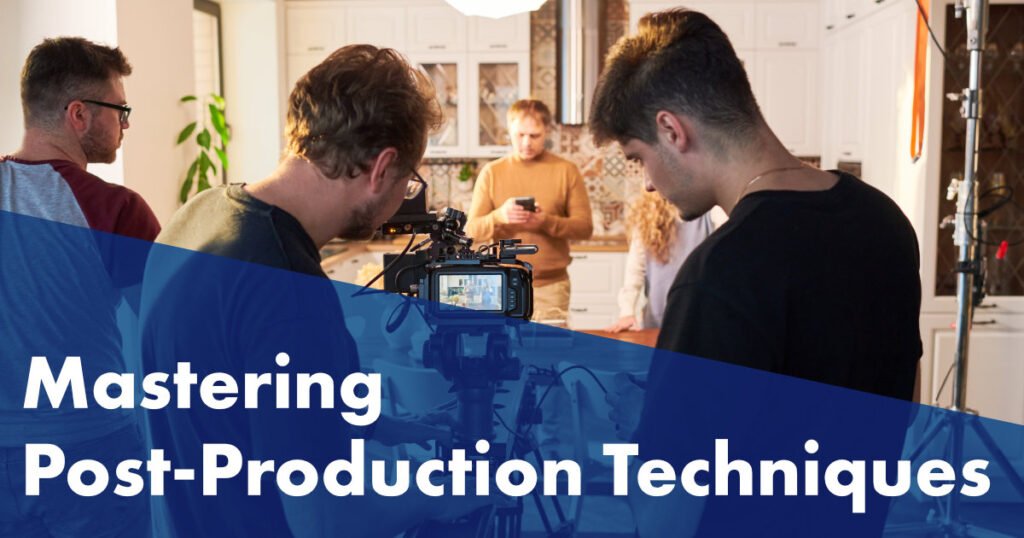Mastering Post-Production Techniques for Compelling Visuals


Mastering post-production techniques is pivotal for creating compelling visuals across various scales of production, whether it be commercial, film, or online content. The process involves a blend of creativity and technical skills to enhance and transform raw footage into polished, cinematic quality visuals. Here’s a closer look at the key areas in post-production:
Simplified Advanced Editing Techniques for Impactful Storytelling
Editing involves more than just cutting and arranging footage. It’s about choosing the right takes and using advanced techniques like color grading and audio enhancement to effectively tell a story. Color grading shapes the mood, and good audio editing adds depth to your narrative. It’s important to use transitions and effects that complement, not overshadow, your story. Tools like Adobe Premiere Pro and Final Cut Pro are key for achieving professional results.
The Role of Visual Effects in Post-Production
Visual Effects (VFX) are essential in creating scenes that can’t be filmed in real life. They enhance storytelling by making the final product visually stunning. Tools like Adobe After Effects and Blender are vital in this process, allowing the integration of impressive motion graphics that add value to your project.
Creative Use of Color and Light in Post-Production
Manipulating color and light is crucial in post-production. By adjusting these elements, you can change the video’s mood and tone. Understanding color theory is key to using different palettes to evoke emotions and achieve specific visual effects.
Achieving Cinematic Quality in Post-Production
The essence of cinematic quality lies in high-resolution editing, sophisticated sound design, and meticulous color grading. Techniques like multi-camera editing and narrative flow are crucial. Sound design and mixing add depth, while color grading shapes the visual aesthetics. Don’t forget the importance of sound design and mixing in creating an immersive experience.
Integrating 3D Elements into Video Projects
Blending 3D elements into video projects needs both creativity and technical know-how. Tools like Cinema 4D help create 3D animations and effects. It’s important to ensure these elements enhance, rather than overpower, the narrative.
Keeping Up with Industry Trends
The post-production industry is constantly evolving. Staying updated on the latest tools and techniques is crucial. This includes familiarizing yourself with advancements in editing software and hardware configurations that can streamline your workflow and improve the quality of your projects.
Effective Use of Audio
Good audio editing can significantly elevate a video. Background music, sound effects, and voice-overs should be used thoughtfully to create a more immersive experience. Tools like Audacity, Adobe Audition, and Logic Pro X are key for professional-level audio editing.
Storytelling through Editing
Editing influences how viewers perceive the story. Techniques like jump cuts, match cuts, and crossfades help convey emotions and messages, making storytelling a pivotal aspect of post-production.
As the post-production industry continues to evolve, staying informed about the latest tools and techniques is essential. For those interested in further enhancing their post-production skills, exploring the essential software and hardware used in the industry can be a next step. This involves understanding the latest advancements in editing software, hardware configurations, and other tools that can streamline the post-production process and elevate the quality of your projects.

Responses